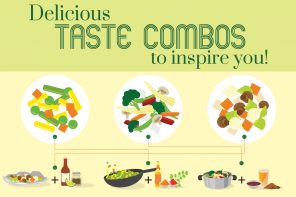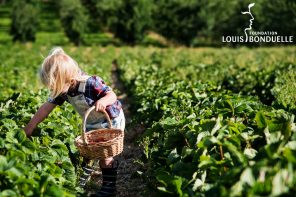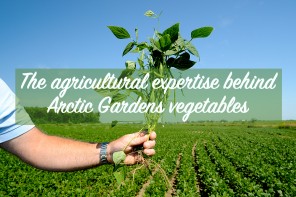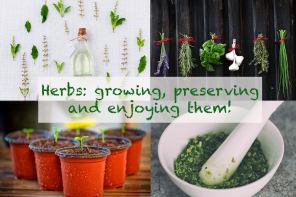10 reasons to have a garden this summer
Enjoy a great activity with the whole family
Life often passes by too quickly, so sometimes it’s hard to stop and enjoy the simple pleasures it has to offer. This summer, don’t miss out on another second that could turn into a memorable moment with the family. Gardening can, in fact, bring you closer together while working on a common project. A garden will allow you to spend more time with loved ones and talk every day.
Always have veggies on hand
How often do you go to the market in the summer? With a garden, you always have an alternative when you’re in the mood for a good salad with colourful veggies or a side to your main dishes. Getting hungry? Just go to the garden and pick a tomato or cucumber if it’s ready.
Eat more veggies
If you’ve got kids, think about initiating them to gardening and doing an activity together. As their seedlings grow, so will their attachment to their own veggie garden. They’ll enjoy eating their harvest and ask for more since they’ll be proud of THEIR veggies! And more than that, gardening peaks children’s curiosity because they want to know how vegetables come out of the earth!
Be kind to our planet
Eating local and in-season products is good for the environment and having a garden can help you move towards this. If you grow vegetables without chemical fertilizers, they won’t contain any pesticides or insecticides.
Enjoy mouthwatering variety
When you choose the veggies you want to grow in your garden, think not only of the ones you often buy at the market, but also of the ones you love, but purchase less frequently. Having them directly in your garden will encourage you to appreciate them and to vary your veggie consumption.
Taste the freshness
Vegetables sold at the grocery store are often very big, so they can have lots of seeds or be pasty. Having a garden gives you a chance to grow veggies (beans, cucumbers, zucchini, turnip, etc.) that are smaller and more flavourful with better texture.
Delight your family and friends
Having a garden means having so many veggies that you sometimes won’t know what to do with. Anybody who’s ever had a garden knows that you’ll find yourself with big bags of veggies, more than you could ever eat. Think about freezing or canning some, but also give some of your latest harvest to loved ones. You can also bring the extras to local organizations like a soup kitchen in your neighbourhood.
Save money over the long run
In the first year, it’s normal to have to spend a certain amount of money on gardening tools (gloves, garden hose, gardening posts so that vegetables grow tall, etc.). After that, you’ll need earth and seeds. In the second year, gardening becomes a cost effective activity because you only have to buy your plants. If your garden gets big enough and you grow most of the vegetables you eat for the summer, you’ll definitely save.
Stay in shape
Don’t have time to get fresh air and work out every day? Gardening is an excellent excuse to get out and move a little. You’ll work several muscles while enjoying yourself. On average, an adult can lose an average 400 calories in one hour of gardening! Just pay attention to your posture because no one is immune to back pain.
Eat veggies from here
With a garden, you can stop wondering where your veggies come from. Vegetables sold at the grocery store may have travelled great distances before landing on the shelves. With a garden, there’s no secret to the freshness, nature or the way your vegetables were grown.
FAQs on gardening (Questions/Answers)
When should I start planning my garden?
Soil, seeds and young sprouts start being sold at the beginning of May, so that makes the end of April the perfect time to start planning your garden. Get outside, measure the plot that you have available for adding soil and planting seeds. And don’t forget that your plan should leave enough space between vegetables so they’ll grow without any problems!
How much area should my first garden have?
Experts recommend a vegetable garden of about 120 ft2 (12 m2) to feed a couple for the summer, depending however, on how much land you have. For a family of four, a garden that’s 150 to 200 ft2 (14 to 18 m2) should be enough if you’re just starting out. You should be able to plant a reasonable amount, about five or six different vegetables.
If you have a large plot of land and a few years of experience under your belt, 750 ft2 (72 m2), is doable. Remember that the bigger your garden, the more variety you can plant and the more space you can leave between them for them to grow freely.
It’s wise, of course, to start gradually with a smaller garden and expand it every summer. If you use a wooden structure to enclose your garden, consider making it bigger the first summer without using the entire space, so you don’t have to build it again the following year.
Where should I make my garden?
Ideally, choose a spot in your backyard where it will get 6 to 8 hours of full sun per day. You garden shouldn’t be in the shady spot next to the shed or the neighbour’s house. Choose a location that is easily accessible from all sides if you don’t want to turn watering into an acrobatic sport. Choose a flat area over a sloped one, but if that’s not possible, just make sure that the ground is level. Don’t choose a spot too close to a tree because its roots could hamper your veggies’ growth. Gardening fanatics who unfortunately don’t have the amount of space needed in their backyards can still create a garden on their balcony. Growing veggies in a small space has been getting more and more popular over the last few years.
Should I buy seeds or seedlings?
Tomato seedlings from the nursery are very popular because there are many varieties available and they’re healthy. Carrots, beans, zucchini, cucumbers and beets can be planted easily from seed directly into the garden. Lettuce can be bought in either form in order to benefit from two harvest periods. It’s possible to plant the seeds yourself indoors in small, earth-filled containers towards the end of March, then transplant them in the garden mid-May, but that requires a little more experience and commitment.

Which vegetables should be avoided in a first garden?
First is cabbage and Brussel sprouts since they attract insects. Second is broccoli and cauliflower because they mature at the same time, so much so that you won’t know what to do with them. You’d probably end up giving away a lot of it before they lose their freshness. Third is corn because in the fields, the first two rows never produce anything because of excessive sun and wind. If you don’t plant two rows in your little patch, you’ll be sorely disappointed to see that they’re not as nice as you’d hoped for. If you’re determined to plant them, put them at the back near the fence protected against the wind and hot sun!

What kind of soil should I use?
Choose soil that has sand, clay and obviously pure earth. The combination of these three elements usually allows vegetables to grow without any problem. Pure, black soil, soil with too much clay or soil with too much sand won’t be effective.
To find the perfect soil for your veggies, go to the nursery or gardening store and ask an expert. Then choose a natural fertilizer appropriate for your gardening projects (manure, compost, soluble fertilizers or even crushed eggshells). Regardless of which soil and fertilizer you choose, it’s important to spread it all out in your garden in one thick layer to help the roots develop properly.
When should I put the soil and plant my veggies?
You can add soil to your garden once the ground has thawed. Then you can plant as long as temperatures stay above 10° C. Planting can be done from about mid-May and go till the beginning of June! By buying baby seedlings (seeds that have already been planted in soil a few weeks before being sold), you’ll save two or three weeks. That’s why it’s ideal if you’re last minute or are hoping for immediate results. Consult our crop calendar to see when you should plant and harvest your various
How should I arrange my seedlings?
Regardless of where or how you decide to do your garden, think about drawing the rows and aisles in the soil. The rows of soil must be elevated as this will serve to receive the plantings. Aisles allow the vegetables to breathe well. Some vegetables like carrots, onions and beans can be planted in two rows side by side by leaving at least 20″ (50 cm) between each. The layout of your plants will evolve from year to year according to what you’ve learned after each summer.
Which vegetables should be planted next to each other and which ones should ABSOLUTELY NOT be planted next to each other?
Before the arrival of chemical pesticides, companion techniques were developed to foster the best natural environment possible to grow vegetables. To maximize your chances of creating a great summer garden, here are a few vegetables and their good/bad neighbours. The bad neighbours may be the best companions in your plate, but would never be in your garden! The growth of one vegetable could be to the detriment of the other.
When is the best time of day to water my vegetables?
As long as the nights are fresh (end of May and beginning of June), don’t water them during the day because the water will cool down and stagnate in the soil posing a potential problem. That’s why for spring, we recommend watering late in the morning when soil is nice and warm. In summer, it’s the complete opposite. Watering in the middle of the day is totally useless as water evaporates so quickly that plants don’t have time to absorb it. In the summer, give your veggies a drink early in the morning or after supper when the sun is slowly setting.
How often should I water?
To see if your seedling needs water, touch and scrape the earth at its base so you can determine its level of moisture. During the first month of growth, water at least twice a week. No reason to water seedlings a little each day. Water them less often, but with more water. That forces the roots to draw the water up from deeper in the earth which promotes better growth.
How do I water without damaging the seedlings?
Water seedlings from the base and make sure you let the water run a little at low pressure. If you don’t, you’ll perforate the soil. When it comes to seedlings that have just been transplanted to your garden, make sure not to wet the leaves otherwise they’ll stick to the soil and kill the seedling.
What kind of water should I use in the garden?
No need to waste clean drinking water on watering the garden. Set up containers to collect rainwater that you can then transfer to a watering can. You can also save the cooking water from potatoes or other vegetables, rice or pasta. By doing this, you’re giving the soil lots of nutrients that will help your veggies grow. Just make sure it’s not salted water!

How do I prevent animals from eating my seedlings?
There is no fertilizer or plant that will prevent groundhogs from digging in your garden. Try to scare them away by planting plastic forks around your seedlings, tines sticking up. If you find that one of them is still eating your crops, stop by the SPCA or animal refuge and rent a cage (cost varies from $10 to $25 for 7 days). Put the cage in your garden with bait inside it and check every day to see if you’ve caught the creature. When that happens, bring the cage to an open space and release the animal. If you don’t want to relocate the animals yourself, contact the SPCA nearest you as they generally offer this service. You’ll just have to cover the transportation costs.
How do I garden while completely respecting the environment?
– Put wood chips or cocoa shavings on the soil between your seedlings to create a natural fertilizer instead of buying a chemical one.
– Water early in the morning or in the evening so as not to waste water due to evaporation and try not to use drinking water for watering.
– Collect rainwater in large pails and reuse it later in your garden.
– Use compost as fertilizer if you compost in your yard or can get a bag from your city.
Veggies that are easy to grow – how can I do that successfully?
Dozens of vegetables can grow very well in your garden. However, some require more experience, care and work than others. We recommend that beginners not to spend too much of their time and talent on gardening and choose vegetables that are easy to maintain. So here are the veggies that we recommend starting with if you’re a beginner, as well as a few tricks to grow them successfully!
Tomatoes
– Tomato seeds take close to four months before they can be eaten, so don’t be afraid to buy seedlings. You won’t have to wait the two months or so for them to germinate.
– Know that tomatoes need a lot of sun.
– Plant the seedlings about 50 cm away from each other.
– Water close to the soil so as not to damage the leaves.
– Water them twice a week with lots of water.
– Pick them as they ripen and as they change from green to orange/red.
– Plant your seedlings in a circle or tie them to stakes as they grow.
It’s the most economical and profitable vegetable because each plant can bring you 30 lbs of tomatoes in the summer and because you can pick them for close to four months.
Carrots
– Need good, rich soil.
– Don’t plant the seeds too deep in the soil. Half a centimetre deep is good enough.
– Plant them in the sun.
– Water gently.
– Water them 4 to 5 times a week with small amounts for the first month.
– After a month, water them once or twice a week with lots of water.
– Plant them in the spring and you’ll have a huge harvest at the end of the summer or plant them in rows every week for a month to stagger your harvest.
Green and yellow beans
– If you don’t have enough space, choose climbing beans which will give you more soil space for other vegetables.
– Plant seeds about ½” deep.
– Plant stakes that will maintain the seedlings when they’re tall.
– Water regularly (about 3 times a week).
Zucchini
– Plant seeds in groups of three.
– Leave about 70 cm of space between seeds to allow them to grow freely.
– Pick them about two months after planting the seeds when they’re big enough.
– Don’t be surprised by the abundance of your crops the first time around.
Lettuce
– Try planting seedlings AND seeds. You’ll get two crops this way.
– Give them lots of sun.
– Water your seedlings often (about 3 times a week) and give them lots of water every time.
– Watch out for worms that can be voracious and damage your plants.
Cucumbers
– Cucumbers are the last veggies to plant, either at the end of May or beginning of June.
– Plant seeds about 1.5 cm deep.
– Make sure to leave about 1 metre between each cucumber seedling that you sow.
– Cucumbers also need a lot of sun.
– Give them plenty of water (and about 2 or 3 times a week).
– Think about putting seedlings between two seeds which will protect them from strong wind because cucumbers don’t like air currents.
– Try to harvest them lightly before full maturity (meaning before they contain too many seeds). They’ll taste better than the ones sold at the grocery store.
– Make sure to tie the seedlings with string to a vertical structure (trellis, fence, hockey stick planted upside-down or something along those lines) so they grow tall.
Beets
Even if you’re not a fan of them baked, boiled or roasted, just think of all the jars of pickled beets that you can make once fall comes around.
– Leave about 30 cm between seedlings.
– Water them in moderation (once a week is enough unless there is a drought).
– Pick them when they’re about the size of an egg.
– Plan some time one afternoon at the end of the summer season to put your pickled beets in sealed jars to conserve them all year.
– Save a few for an occasional side dish.
Other little tricks for a great first garden
- Don’t walk in your garden after a rainfall. This will move the soil and encourage weeds to grow.
- When planning out your garden, think about planting flowers. They attract insect pollinators necessary for fructification.
- When you transplant your seedlings, make sure not to damage the leaves or roots.
- Transplant your seedlings at the end of the afternoon so as not to subject them directly to the hot, relentless sun.
- Don’t put more soil onto your seeds than the size of the seeds themselves, so bigger seeds need more soil and smaller ones need less.
- Don’t forget to weed regularly around your seedlings. This is called banding. By removing weeds as they appear, your veggies will grow more easily.
- Before taking on your first garden, talk to friends and family. Your parents or grandparents may have already made a garden. Their good and bad experiences in this area can guide you in your own process.
The golden rule of gardening is to love what you’re doing. Maintaining a garden is one of life’s little pleasures and an incredible opportunity. Remember that your first garden won’t be perfect and that’s normal. Learn from your personal experiences and don’t forget that there are plenty of resources to answer your questions. Books, the Internet, your entourage… don’t hesitate!
You should also know that you can get hooked on gardening and even the skeptics among you will be anxious to do it again next year. You’ll find the experience enriching and even though the first garden is the hardest, it’s also the one that you’ll learn from the most.
And on that note, the entire Arctic Gardens team wishes you only success in your gardening endeavours and hopes that you throw yourself completely into this project. If you still have questions, don’t hesitate to ask us by posting a comment on this article.














amazing information, worth reading and very useful too. will use this to make my own <a href=http:/http://www.greenorchid.co.in/"plant nursery
Very useful article. i am going to use this in my plant nursery